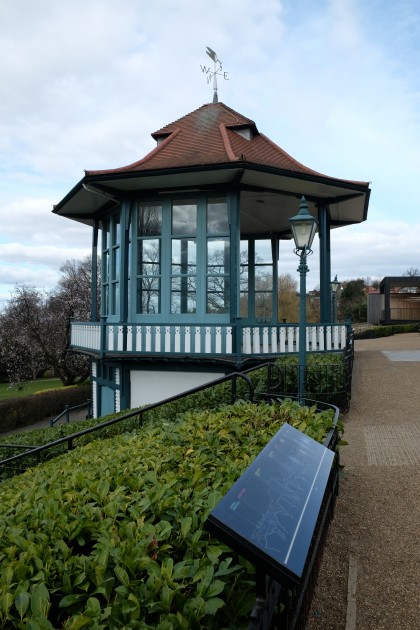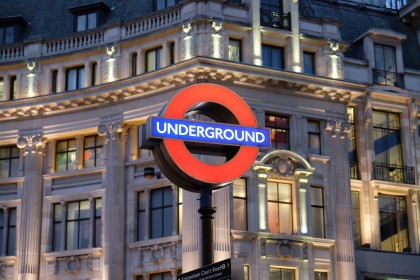Why you can trust TechRadar
The camera turns on promptly when set to the High Performance Power management setting, with a noticeable boost in speed over the standard power option. The camera also responds well to differences in the scene as the lens is zoomed or the camera is moved around the scene, adjusting the view fluidly, although one I noticed that, on occasions where the camera was switched back on soon after being switched off (as you would sometimes do when shooting spontaneously), the camera would sometimes fail to power up at all. Shot-to-shot times could also be improved, as the slight blackout between frames causes a slight delay before you can take the next shot.

- Spot metering helped to get the exposure right for this scene, which was slightly underexposed with the metering pattern set to the Multi mode. Click here for a full size version.

- Captured at a shutter speed of 1/20sec, the 18-55mm kit lens' image-stabilisation system has done well to retain sharpness. Click here for a full size version.

- This was taken at the widest (18mm) end of the 18-55mm kit lens's zoom range. Click here for a full size version.

- And this was taken at the maximum zoom setting (55mm). Click here for a full size version.
With the XF 18-55mm f/2.8-4 R LM OIS kit lens in place the camera's autofocusing system generally does well. It's not quite the fastest system of its kind, but for static subjects in good light it's generally fast enough. As we'd expect this drops a touch against low-contrast subjects or in poor light, but not by much. During this test it did, however, get stuck on the odd occasion – when focusing in low light, for example, it largely performed as expected but occasionally gave a false-positive focus confirmation. Furthermore, even with the focusing point set to its smallest size, it found it difficult to pick out a well-lit subject on which it was focused, preferring instead to focus around it.
The camera lacks sensor-based image stabilisation, although the OIS system inside the 18-55mm lens performed well. Shooting as close to the subject as possible at the 55mm end of the lens, I found the camera delivered acceptably sharp images at around 1/20sec, with usable results at smaller sizes at 1/15sec. This represents an improvement of around two stops, although image stabilisation systems are more effective as subject distance increases, and I found this to indeed be the case with more distant subjects.
While the X-Trans CMOS II sensor and EXR Processor II engine are no longer the most recent of Fuji's imaging technologies, their partnership is tried and tested. And, as we'd expect, the X-E2S is capable of delivering very pleasing images straight out of the camera.
The metering system is largely sound, doing particularly well when shooting a backlit subject, although the screen's visibility in bright conditions can make assessing this accurately somewhat tricky without the assistance of a histogram. Thanks to a good choice of Film Simulation options and a capable auto white balance system the camera appears render colours as expected straight out of the camera, and I found it performed well under the mixed natural/artificial conditions under which it was tested.

- Noise is kept low throughout much of the ISO range, making settings such as ISO 3200 perfectly acceptable for general nighttime shots without the need for processing. Click here for a full size version.

- There is some slight pincushion distortion visible at the 55mm end of the 18-55mm kit lens, but this is easily corrected (Monochrome mode). Click here for a full size version.

- Images straight out the camera show good detail, pleasing colours and accurate exposures (Provia mode). Click here for a full size version.

- Faced with a combination of fading daylight and various artificial lighting sources, the Auto White Balance system has done well to reproduce the scene accurately. Click here for a full size version.
Noise is very well controlled throughout the ISO range, and I was impressed with how well this was suppressed in much of the four-figure sensitivity range, with just a slight texture visible. This, together with lower chroma noise than expected, suggests clever in-camera processing. Naturally, at settings such as ISO 6400 this is more apparent, and at the highest setting of ISO 51,200 (which is JPEG-only), heavy noise suppression, detail loss and colour shifts are noticeable. Still, in images captured at more moderate sensitivities, I was pleased at how easy it was to successfully remove this noise without degrading the images as whole.
While traces of chromatic aberration remain in JPEG images, comparison with raw counterparts show the majority of this to be successfully removed, and the detail left behind in high-sensitivity images is also very good, with noise-reduction doing what it's supposed to without robbing significant detail. JPEGs captured on the Provia/Standard setting show good saturation and a gentle boost to contrast over raw files, although this process does tend to block shadow areas and reduce the fine detail present on default settings.
Sign up for breaking news, reviews, opinion, top tech deals, and more.
The 18-55mm kit lens is reasonably consistent with the level of detail resolved throughout the frame, although the slight softness observed at its maximum aperture at telephoto (f/4) means that stopping down a touch is necessary to better define details – but that's not unusual. At the wideangle end, however, details are good across the frame, at even wider apertures. Distortion is also low throughout the range and practically non-existent at 25mm, although a little pincushion distortion can be seen at the 55m end of the lens.
Overall, images from the X-E2S are very good, characterised by low noise, good colour and largely fine metering. Default JPEG output makes this reliable enough for everyday images, although it's possible to regain more fine detail, particularly in the shadows, by shooting raw.
